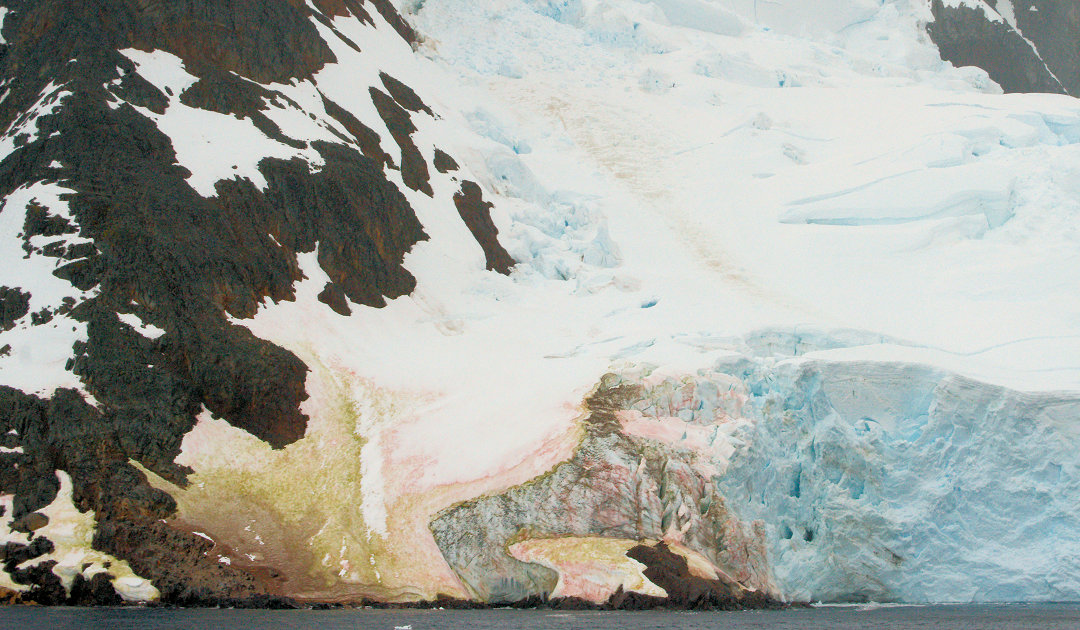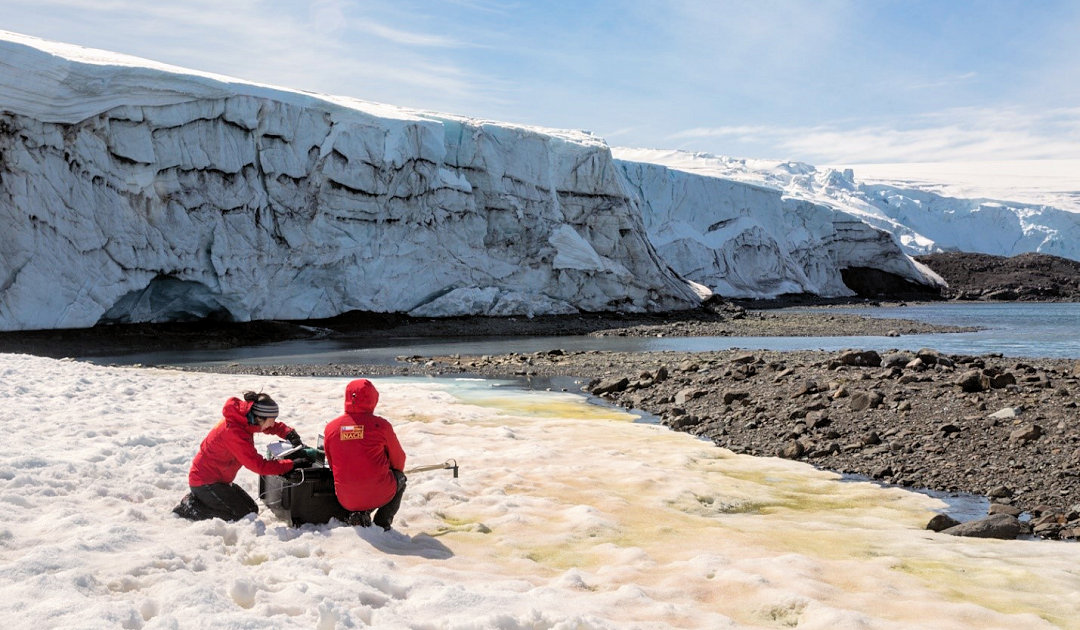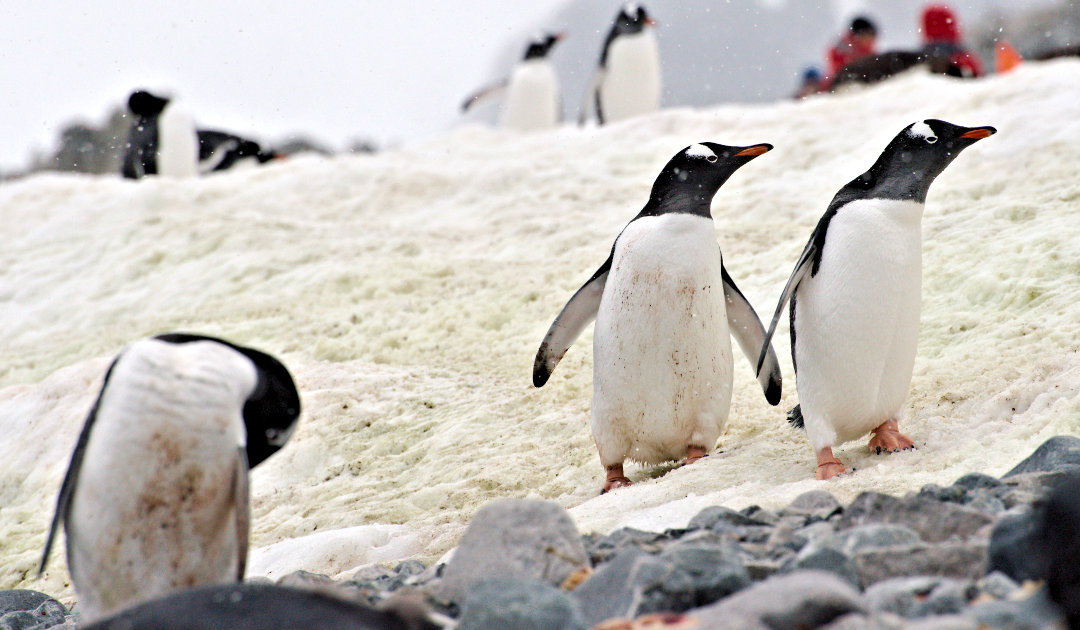
For most people, snow is white. But in the midst of the white splendour, tiny algae can be found, which, depending on the conditions, can turn snow into patches of red or green over large areas. These snow algae have been observed with increasing frequency along the Antarctic Peninsula, which researchers attribute to the warming of the region. But what actually looks pretty and colorful has severe consequences, according to a new study.
The team led by study leader Dr. Alia Khan of the National Snow and Ice Data Center NSIDC in Boulder, Colorado (USA) has found out by comparing measurements at different locations in Antarctica with long-term measurements of the US station Palmer that the albedo effect, i.e. the radiation of sunlight, is reduced by the colouration. This, in turn, significantly increases the heat absorption (radiative forcing) of the snow and thus the snowmelt, which, together with the higher frequency of such algal blooms, can lead to an acceleration of the snow and ice melt on the Antarctic mainland. This effect had not been taken into account in the previous model calculations, the team writes in its paper. The study was published the latest issue of the journalThe Cryosphere.

According to the researchers, however, it plays a significant role whether the algae are red or green. The results of their investigations show that the green algal patches reduce the albedo effect considerably more than the red ones, in fact by twice as much. This is due to the fact that green algae absorb more solar radiation than the red algae. Thus, the snow also melts faster in such places. Scientists have calculated that around 3,700 cubic metres of additional snow melts each year on the Antarctic Peninsula alone due to these algal blooms.
“The blooms can be so intense and dark (…) that they warm up the surface and cause more melting”
Dr. Alia Khan, National Snow and Ice Data Center, Boulder
The algae patches on the snow are becoming more frequent due to the warming of the region. This result was discovered in an earlier study. But the impact this has on the snow was first demonstrated with the work of Alia Khan. “The blooms can be so intense and dark (…) that they warm up the surface and cause more melting,” says Dr. Alia Khan. “The warming is likely expanding and strengthening the snow algae bloom season, which could continue to increase in this region of Antarctica as the climate continues to warm.”

Another study from last year was able to show that the occurrence of such green algal blooms is related to the distribution of animals, especially penguin colonies. As the warming of the peninsula region pushes in particular gentoo penguins further and further south, this may also further extend the effect of algal blooms. In their paper, the researchers conclude that the effect that these snow algae blooms have on melting processes along the Antarctic Peninsula has not been accounted for in previous model calculations, but is significantly high. “The change in climate is pushing things to new extremes, with some unwanted consequences,” explains Ted Scambos of the University of Colorado’s CIRES and co-author of the study. “We’re seeing that these new darker and more widespread blooms are having a knock-on effect of accelerating melting, a feedback that makes the ice retreat a little faster.” The study may also show that the idea that green algae blooms could somewhat mitigate CO
Dr Michael Wenger, PolarJournal
More on the subject:





